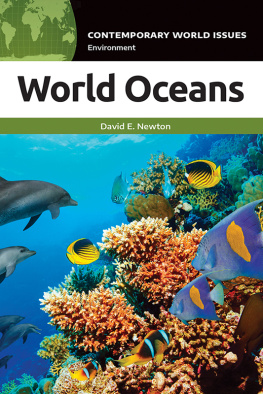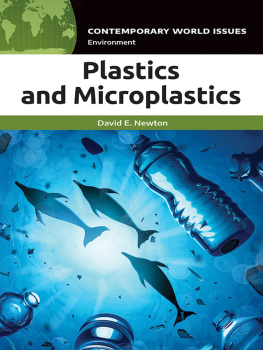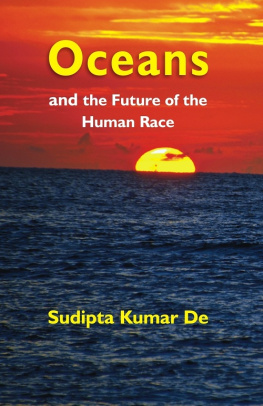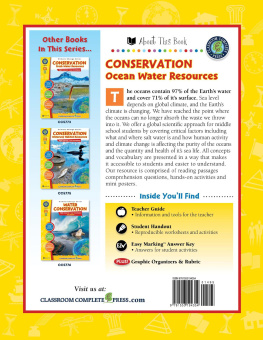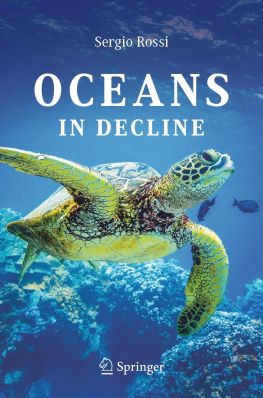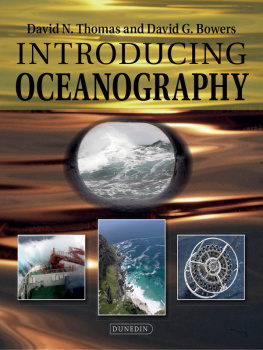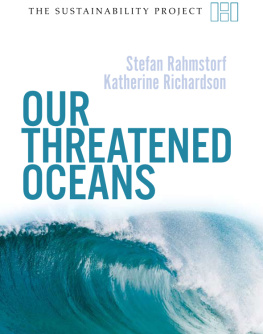About the Author
David E. Newton holds an associates degree in science from Grand Rapids (Michigan) Junior College, a BA in chemistry (with high distinction), an MA in education from the University of Michigan, and an EdD in science education from Harvard University. He is the author of more than 400 textbooks, encyclopedias, resource books, research manuals, laboratory manuals, trade books, and other educational materials. He taught mathematics, chemistry, and physical science in Grand Rapids, Michigan, for 13 years; was professor of chemistry and physics at Salem State College in Massachusetts for 15 years; and was adjunct professor in the College of Professional Studies at the University of San Francisco for 10 years.
Some of the authors previous books for ABC-CLIO include Eating Disorders (2019), Natural Disasters (2019), Vegetarianism and Veganism (2019), Gender Inequality (2019), Birth Control (2019), and The Climate Change Debate (2020). His other books include The New Chemistry (6 volumes, 2007), Nuclear Power (2005), Stem Cell Research (2006), Latinos in the Sciences, Math, and Professions (2007), and DNA Evidence and Forensic Science (2008). He has also been an updating and consulting editor on a number of books and reference works, including Chemical Compounds (2005), Chemical Elements (2006), Encyclopedia of Endangered Species (2006), World of Mathematics (2006), World of Chemistry (2006), World of Health (2006), UXL Encyclopedia of Science (2007), Alternative Medicine (2008), Grzimeks Animal Life Encyclopedia (2009), Community Health (2009), Genetic Medicine (2009), The Gale Encyclopedia of Medicine (20102011), The Gale Encyclopedia of Alternative Medicine (2013), Discoveries in Modern Science: Exploration, Invention, and Technology (20132014), and Science in Context (20132014).

How inappropriate to call this planet Earth when it is quite clearly Ocean.
Arthur C. Clarke Quotes (2019)
That viewpoint has been expressed many times over by various observers (see, e.g., Arthur C. Clarke Quotes 2019). The planet is probably even more often referred to as the Blue Planet or Water Planet. All of these terms reflect the fact that scientists currently know of no other object in the universe with such a vast amount of that life-giving liquid. About 71 percent of Earths surface is covered with ice and water. Of that amount, 96.54 percent occurs in the form of salt water in oceans, seas, and bays. Another 1.74 percent of Earths water is tied up in the cryosphere, the portion of Earth covered by ice sheets, glaciers, and permanent snow fields. That leaves a surprisingly small amount of freshwater needed for all plant and animal growth on the planet, less than 2 percent, in the form of lakes, rivers, groundwater, soil moisture, biological water, and other resources (How Much Water Is There on Earth? n.d.). Given such numbers, its easy to see why the worlds oceans are such an important part of the natural environment and human life.
Where did Earths oceans come from? That question has intrigued researchers for centuries. Unraveling the origin and evolution of the oceans is a greater challenge than it is for landforms. In the latter case, solid materials (rocks) that formed billions of years ago are still in place and can be studied to determine their age and evolution. Water that makes up the oceans presents a different problem. That water existed at one point in Earths history almost entirely in the form of water vapor in the atmosphere, and at other times, it existed at least partially in the form of snow and ice. Determining the precise amount of water present at any one time in Earths history, and its location and boundaries, is, therefore, a challenging task.
One thing we know for sure is that water did not exist when the planet was first formed about 4.54 billion years ago. Surface temperatures were so great that any liquid water present on Earth would have boiled away into space. Researchers now believe that it would have taken 200 million years for the planet to cool sufficiently so that bodies of water may have been able to form. But where did the water come from to form those oceans?
One popular theory is that comets and asteroids colliding with Earth may have deposited water that accumulated and created the earliest oceans. Research studies from time to time have provided some evidence for this theory. For example, a study reported by a team led by Jet Propulsion Laboratory scientist Dariusz Lis in 2019 found that a comet that had passed close to Earth contained water with chemical characteristics almost identical to that found in the oceans today (Lis, et al. 2019). Whether this mechanism could provide all the water that produced the primitive oceans is still not clear.
Another theory of ocean formation is that water released from the cooling Earth escaped into the air and then fell back to Earth in the form of rain. As this process continued, sufficient water accumulated to produce the earliest oceans. Some research has produced evidence for this theory as well (see, e.g., Elkins-Tanton 2011). A third option, then, is that both mechanisms, deposition from comets and asteroids along with the release of water from Earth, contributed to the creation of the first oceans.
In any case, the first water that appeared on Earth was vaporized. It rose into the atmosphere above Earths surface, along with carbon dioxide from the planets interior, forming a greenhouse-like system that caused water vapor to change to liquid droplets. That water then fell back to Earth as rain, and that rain eventually accumulated on Earths surfaces, forming its seas and oceans.
Much of what we know about the evolution of oceans comes from the study of changes in land masses throughout Earths history. According to current theories, a large fraction of Earths original land mass was originally contained in two supercontinents, large land masses from which smaller continents later broke off. The earliest supercontinents are thought to have been Vaalbara and Ur, both small accretions of cratons, large, stable blocks of Earths crust from which continents and supercontinents were formed (Is Vaalbara Earths First Supercontinent? 2019). Over the eons, the size and shape of supercontinents continued to change. (For images of some hypothesized supercontinents, see The Supercontinents before Pangea 2019. For a superb animation of the evolution of supercontinents from about 1.5 mya [million years ago], see Scotese and Elling 2017.) The supercontinents about which we know the most, because they are the most recent, are Gondwana, Euramerica, Pangea (also Pangaea), and Laurasia. (For more details on these supercontinents, see Briney 2019 and Our Changing Planet 2019.) The gradual breakup of the last of these two supercontinents, Pangea and Laurasia, resulted in the formation of Earths map as we know it today.
The movement of large land masses across Earths surface is explained by the theory of plate tectonics. According to that theory, Earths uppermost layer consists of a small number of very large slabs of solid rock. These slabs rest on top of the asthenosphere, the liquid upper layer of the mantle. In a way, then, supercontinents and other large surface features are able to move because they slide over the asthenosphere, much as a cork floats on the surface of water.
In their random movements across the asthenosphere, plates often come into contact with each other. They may collide more or less head on, causing one plate to slide beneath a second plate, a process known as
Next page
